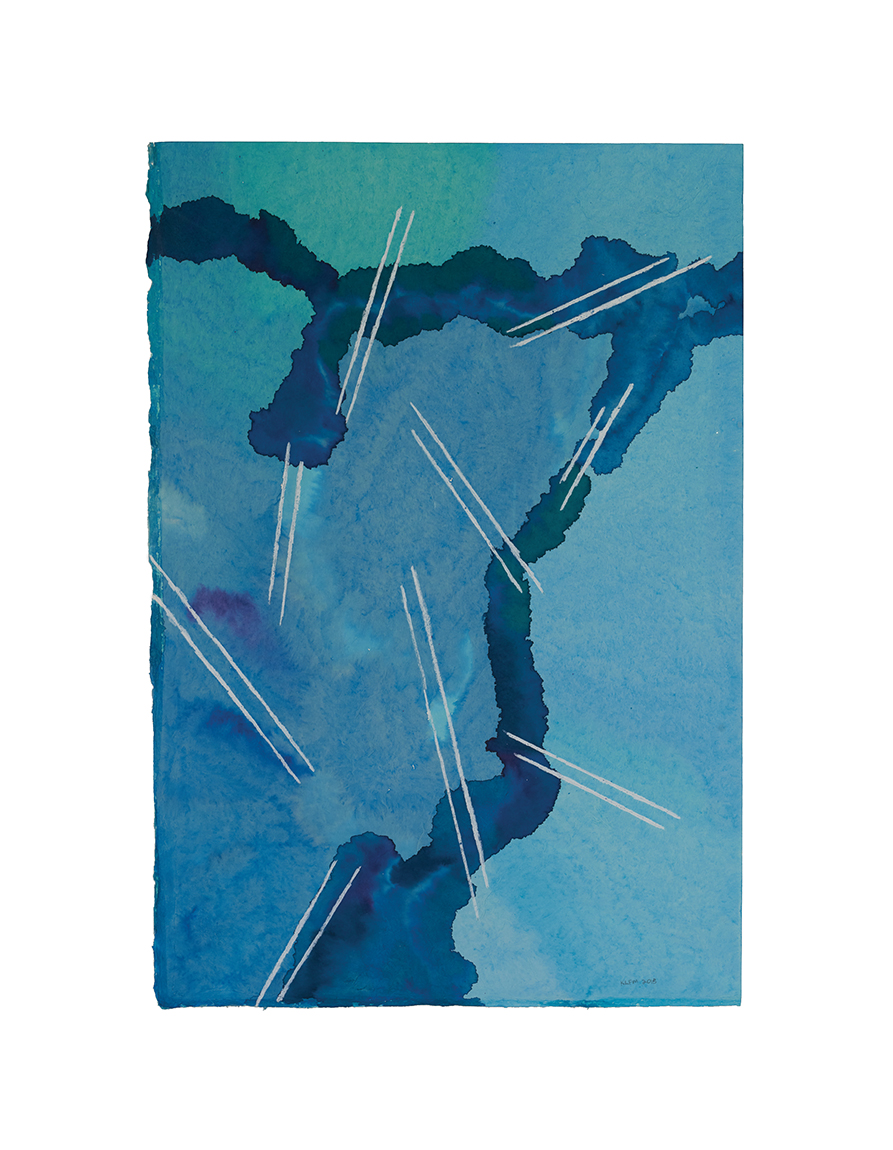Accounting for Lives Lost
By some estimates at least 1.8 million Africans lost their lives during the transatlantic slave trade. Using an online database called Slave Voyages, artist Kathie Foley-Meyer studied maps detailing the paths that slave ships took from Africa to the Americas. Foley-Meyer, a PhD student in visual studies at the University of California, Irvine, created the painting In the Wake: With the Bones of Our Ancestors in an effort to remember those who perished before making landfall. “I just became obsessed with the lives of these human beings that are accounted for, but not really,” she told a university reporter. “They exist as bodies that disintegrated when they were put into the ocean and became part of the oceanic life cycle.”

In the Wake: With the Bones of Our Ancestors, 2018
Watercolor, chalk, and wax on paper, 41.5 x 29 inches
Collection of the National Academy of Sciences
She continued, “I remember looking at the statistics of human cargo—the number of people that survived the voyage to the New World and the number of people who did not. I began to wonder, other than numbers, how do you account for those lives lost? Those people were taken from their homeland and deposited in the ocean for one reason or another that rendered them disposable and not recognized as human beings.”
Foley-Meyer is a participant in the Ocean Memory Project, a collaboration of scientists, artists, engineers, and designers who are exploring the question, “Does the ocean have a memory?” The project is funded by the National Academies Keck Futures Initiative and is led by National Academy of Sciences member Jody Deming.
Image courtesy of the artist.
